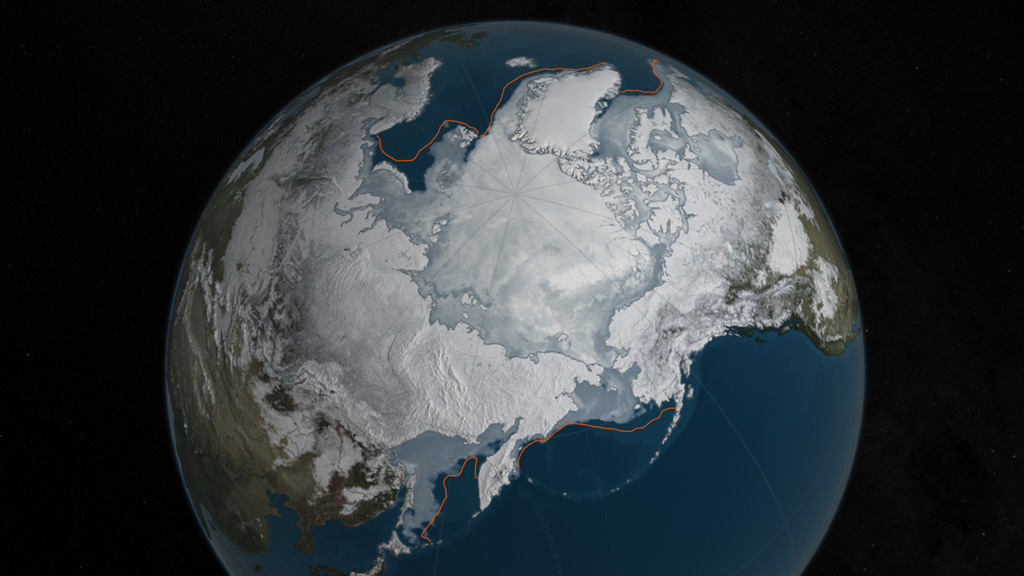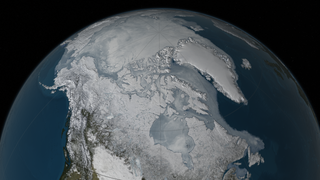Earth
ID: 12192

Every year, the cap of frozen seawater floating on top of the Arctic Ocean and its neighboring seas melts during the spring and summer and grows back in the fall and winter months, reaching its maximum yearly extent between February and April. On March 24, Arctic sea ice extent peaked at 5.607 million square miles, a new record low winter maximum extent in the satellite record that started in 1979. It is slightly smaller than the previous record low maximum extent of 5.612 million square miles that occurred last year. The new record low follows record high temperatures in December, January and February around the globe and in the Arctic. Scientists say as temperatures in the atmosphere and oceans continue to warm, we can expect to keep seeing smaller wintertime maximums in the future. Watch the video for a NASA visualization that shows the growth of Arctic sea ice from its 2015 summertime minimum extent to its 2016 winter maximum.



Sea Ice Growth Slows In Arctic




Source Material
For More Information
Story Credits
Lead Visualizer/Animator:
Cindy Starr (Global Science and Technology, Inc.)
Producers:
Jefferson Beck (USRA)
Maria-Jose Vinas Garcia (Telophase)
Michelle Handleman (USRA)
Scientists:
Walt Meier (NASA/GSFC)
Josefino Comiso (NASA/GSFC)
Project Support:
Robert Gersten (Wyle Information Systems)
Lead Writer:
Maria-Jose Vinas Garcia (Telophase)
Cindy Starr (Global Science and Technology, Inc.)
Producers:
Jefferson Beck (USRA)
Maria-Jose Vinas Garcia (Telophase)
Michelle Handleman (USRA)
Scientists:
Walt Meier (NASA/GSFC)
Josefino Comiso (NASA/GSFC)
Project Support:
Robert Gersten (Wyle Information Systems)
Lead Writer:
Maria-Jose Vinas Garcia (Telophase)
Please give credit for this item to:
NASA's Scientific Visualization Studio
NASA's Scientific Visualization Studio
Short URL to share this page:
https://svs.gsfc.nasa.gov/12192
Keywords:
SVS >> App
NASA Science >> Earth
https://svs.gsfc.nasa.gov/12192
Keywords:
SVS >> App
NASA Science >> Earth








